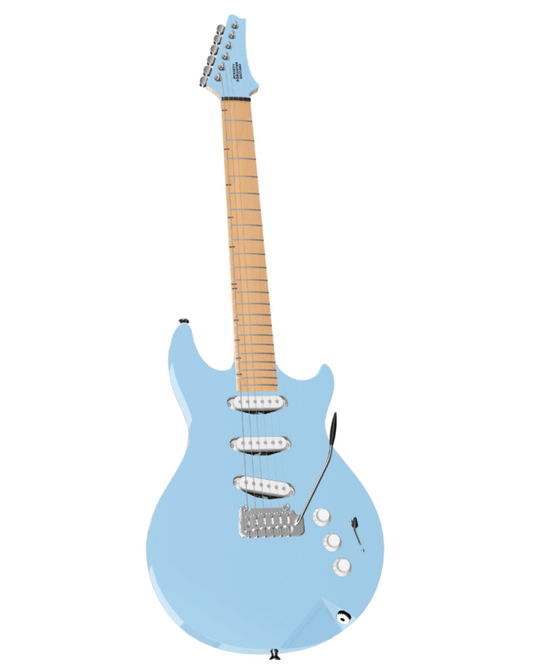Easy mods that you can do yourself to unlock new tonal possibilities from your guitar.
Today we're going to look at a single coil phase reverse switch.
So with the pickup, you have magnet wire that wraps around the coil, and normally one end of that wire will be your hot and one end will be your ground.
And phase reversal is the act of flipping those two around. So your hot becomes your ground and your ground becomes your hot.

Now, this is something you can do easily with most Strat style single coil pickups. But if you have P-90s or you have Tele style single coil pickups that have either a base plate or a metal cover that needs to be grounded, you need to make sure that your pickup has a separation between that shield that connects to the base plate or the cover and the pickup ground.
So the end of the pickup coil, some pickup manufacturers combine those at the pickup, so you can't use this for those. But here at Johnny Foreigner, we separate out that shield and that pickup ground precisely so you can do things like phase reversal.
Now, phase reversal is really useful when you are using more than one pickup at the same time. So if you're in the middle position with a toggle switch, your positions two or four on a Strat-style, five-way switch.
So you have two or more pickups on at once. If one of those pickups is reversed phase, those two pickups become out of phase.
But because they're not at the exact same position along the scale length of the guitar, so they're picking up different parts of the strings vibration, they're not completely out phase. If they're completely out of phase, they would just cancel each other out completely.
Instead, that slight difference between them means that they cancel out a certain amount of the frequencies, and that gives a really unique sound. So this is something that Brian May did a lot with his Red Special guitar, which had switches for phase reversal.
And what you typically expect to hear when one pickup is phase reversed is that the sound is a little thinner, a little more reedy, maybe it maybe cuts through a little bit more.

Okay, so let's start off with what would normally be the black wire from your single coil pickup. That's the pickup ground. So that's typically the end of the coil. That's going to connect into C2, which is our second common connector on the push pull pot.
The other end of the pickup's coil is going to connect to C1. So that's the white wire. Usually that's what we call the hot.
That's normally what you connect to your switch or to your volume control. For an individual pickup volume control connector four is going to go to ground, as is our shield wire.
So if you have a tele style pickup or a P-90 where that base plate or cover is grounded, and again, needs to be grounded separately from the pickup ground, which is just the end of the pickup coil. So that shield's going to go to ground, and our output is going to connect to connector 2, and that output can be a switch, it can be an individual volume control for that pickup, it could be straight to the output jack, wherever you want the pickup signal to go after it's left this switch.
And then finally, we're going to add a couple of jumpers. So one from connector, 1 to connector 4, and one from connector 2to connector 3.
All right, let's talk about what's going on here. So let's follow our signal path from hot all the way to ground. So the hot from the pickup is going into C1, and when the push pull pot is down, C1 connects to 2. So the hot goes in C1 connects to 2 and then goes to the output.
So that's what you'd normally do if you were just connecting your hot output from your pickup to your switch.
Likewise, the black wire from your pickup, the pickup ground is going to go in C2. C2 connects to 4 and 4 is going to ground. So that's normal operation for a single coil pickup.
When we pull up on the push pull, part C1 is no longer connected to 2. C2 is no longer connected to 4.
Instead, C1 connects to 1, and C2 connects to 3. So the hot signal from the pickup on the white wire connects into C1, which is then connected to connector 1, and that blue jumper takes it down to 4 where it goes to ground.
So now our hot is going to ground, likewise, our pickup ground, the black wire from our pickup going into C2, which connects to connector 3, and then that pink jumper takes it all the way down connector 2, where it goes to the output.
So you can see we switch things around - rather than the hot going to the output and the pickup ground going to ground, now the hot goes to ground and the pickup ground goes to the output.
This is not a mod that's for everyone. It gives you a very particular kind of sound. And again, it's only really useful when you're combining pickups, but if you're looking to get the most out of single coil pickups and get the most possible tonal variation, this one's a really fun one. Really fun to play with. So grab that soldering iron and happy modding.




























